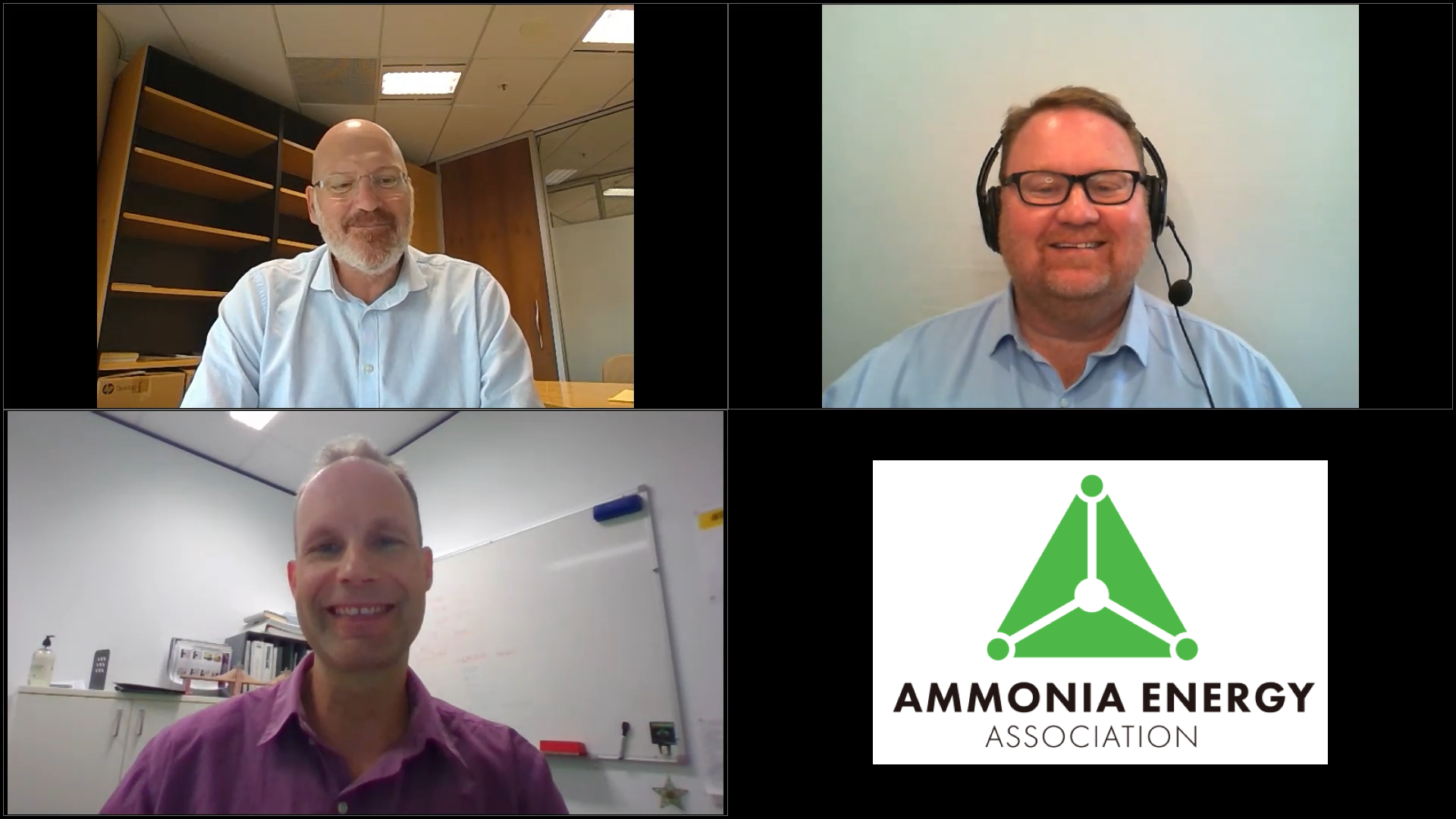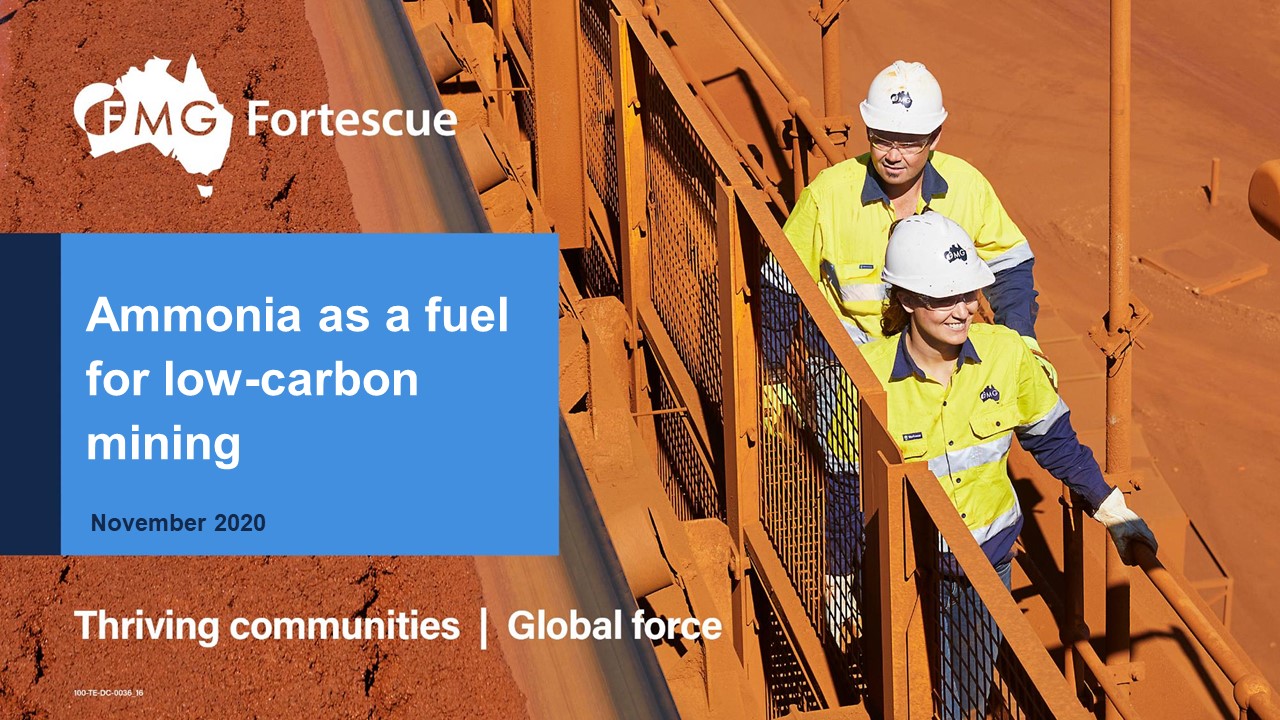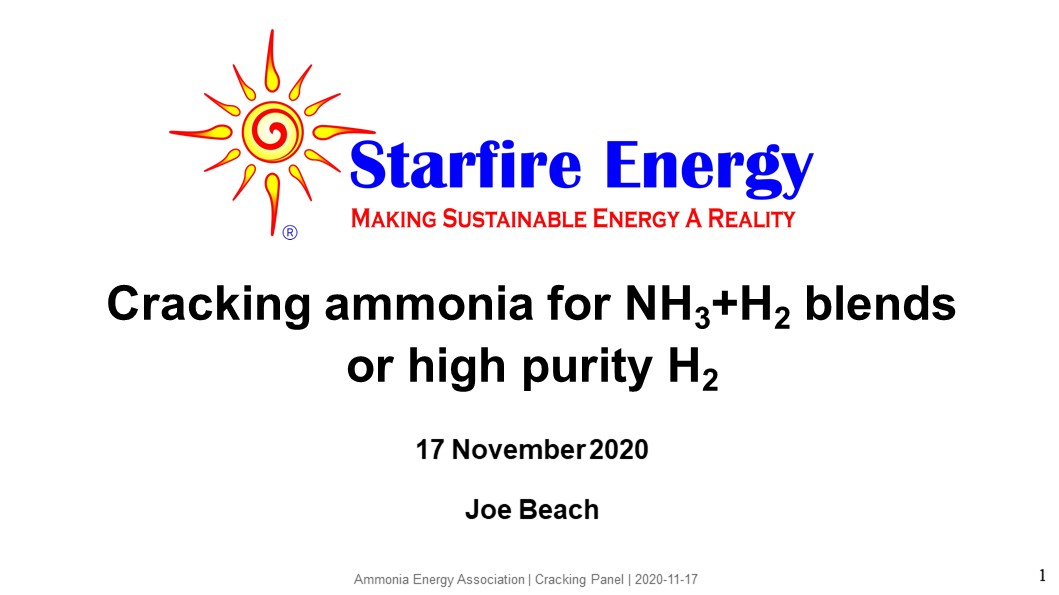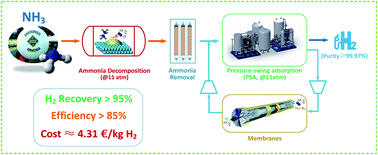Hydrogen Purification
Industrial demonstration of ammonia cracking: exploring global progress
Here, we explore the current demonstration landscape for large-scale cracking. To produce pipeline-quality hydrogen at future energy import hubs, industrial-scale ammonia cracking is still to be derisked and demonstrated, although certain parts of the overall process have been proven at scale. What are the technology elements to be considered, and who are the first-movers deploying the technology in a variety of global locations?
Ammonia Energy Live April: low-carbon innovation at Hazer Group
This April we presented a new episode in our monthly webinar series: Ammonia Energy Live. Every month we’ll explore the wonderful world of ammonia energy and the role it will play in global decarbonisation - with an Australian twist. For this episode we welcomed Geoff Ward, CEO of the Hazer Group. Hazer has been steadily developing their novel methane pyrolysis technique in Western Australia with a new low-carbon hydrogen production facility to begin construction later this year. Geoff joined us to reflect on Hazer’s journey so far, familiarise our audience with their processes and give his thoughts on what needs to be put in place for similar decarbonisation projects to succeed. And - of course - we asked Geoff where ammonia fits into Hazer’s future plans! Geoff was interviewed by Andrew Dickson (Development Manager of the Asian Renewable Energy Hub at CWP Global), and Darren Jarvis (Vice President of Strategic Project Development at Incitec Pivot).
Ammonia cracking: when, how, and how much?
Starfire Energy's ammonia cracking and cracked gas purification technology
Hyundai joins Fortescue and CSIRO to "fast track" ammonia to high-purity hydrogen system
Fortescue recently announced that it has signed a memorandum of understanding (MOU) with Hyundai Motor Company and CSIRO for the “development and future commercialisation” of its metal membrane technology. This technology, which produces high-purity compressed hydrogen from liquid ammonia, was demonstrated in 2018. It enables PEM fuel cell vehicles to refuel using hydrogen that is generated on demand from ammonia. At scale, this technology could enable an ammonia-based hydrogen production, storage, and distribution infrastructure, lowering the barriers to implementation of a national network of hydrogen filling stations. Now, “Hyundai will seek to demonstrate the viability of the technology for renewable hydrogen production and vehicle fuelling in Korea.”
Engie, Siemens, Ecuity, and STFC publish Feasibility of Ammonia-to-Hydrogen
The UK’s Department for Business, Energy and Industrial Strategy (BEIS) recently published the feasibility study for its Ammonia to Green Hydrogen Project. This studies the techno-economic feasibility of importing green ammonia in order to supply large volumes of high-purity low-carbon hydrogen in the UK. The project has been designed and delivered by a heavyweight consortium of ENGIE, Siemens, Ecuity Consulting, and the UK’s STFC. The feasibility study, which is publicly available, represents the conclusion of Phase One of this project. Phase Two is demonstration: “to raise the TRL of a lithium imide based ammonia cracker from 4 to 6/7,” meaning that the technology is ready for deployment.
Hydrogen Filling Stations: techno-economic analysis of on-site ammonia reforming and H2 purification
This month, a team of researchers from Fuzhou University in Fujian, China, published a new paper in the journal Sustainable Energy & Fuels that provides a “Techno-economic analysis and comprehensive optimization of an on-site hydrogen refuelling station system using ammonia.” The study concludes that “the H2 production cost of the NH3-fed on-site hydrogen refuelling station was at least 15% lower than other carbon-free routes (such as electrolysis, solar thermolysis, photo-electrolysis, etc.), and comparable to that of a methane steam reforming system with carbon capture and storage.”








